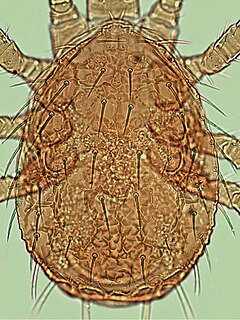
Nothofagus, also known as the southern beeches, is a genus of 43 species of trees and shrubs native to the Southern Hemisphere in southern South America and Australasia. The species are ecological dominants in many temperate forests in these regions. Some species are reportedly naturalised in Germany and Great Britain. The genus has a rich fossil record of leaves, cupules, and pollen, with fossils extending into the late Cretaceous period and occurring in Australia, New Zealand, Antarctica, and South America. In the past, they were included in the family Fagaceae, but genetic tests revealed them to be genetically distinct, and they are now included in their own family, the Nothofagaceae.

Myristica is a genus of trees in the family Myristicaceae. There are over 150 species, distributed in Asia and the western Pacific.

Calanthe, commonly known as Christmas orchids, is a genus of about 220 species of orchids in the family Orchidaceae. They are evergreen or deciduous terrestrial plants with thick roots, small oval pseudobulbs, large corrugated leaves and upright, sometimes arching flowering stems. The sepals and petals are narrow and a similar size to each other and the labellum usually has spreading lobes.
Japyx is a genus of diplurans belonging to the family Japygidae. These eyeless, predatory hexapods largely shun direct sunlight, remaining under stones and among detritus, where they use pincer-like cerci to catch their tiny prey.
Nothofagus womersleyi is a species of plant in the Nothofagaceae family. It is endemic to West Papua (Indonesia). It was proposed to be renamed Trisyngyne womersleyi in 2013.
Cephalodesmius is a genus of Scarabaeidae or scarab beetles.

Stagmatophora is a genus of moths in the family Cosmopterigidae.
The Macronyssidae are a family of parasitic mites in the order Mesostigmata.

Eosentomon is a genus of proturans in the family Eosentomidae.
Ologamasidae is a family of mites in the order Mesostigmata.
Heydeniella is a genus of mites in the family Ologamasidae.

Ameroseius is a genus of mites in the family Ameroseiidae. There are more than 60 described species in Ameroseius.
Otopheidomenidae is a family of mites in the order Mesostigmata.
Leptolaelapidae is a family of mites in the order Mesostigmata.
Hunteracarus is a genus of mites in the family Laelapidae.
Heydeniella mahunkai is a species of mite in the family Ologamasidae.
Eosentomon womersleyi is a species of proturan in the family Eosentomidae. It is found in Australia.
Cunaxa is a genus of predatory mites in the family Cunaxidae. There are at least 50 described species in Cunaxa.
Pronephrium is a genus of ferns in the family Thelypteridaceae in the family Thelypteridaceae, subfamily Thelypteridoideae, in the Pteridophyte Phylogeny Group classification of 2016. Other sources sink Pronephrium into a very broadly defined genus Thelypteris.

Champia is a genus of red algae in the family Champiaceae, first described in 1809 by Nicaise Auguste Desvaux






